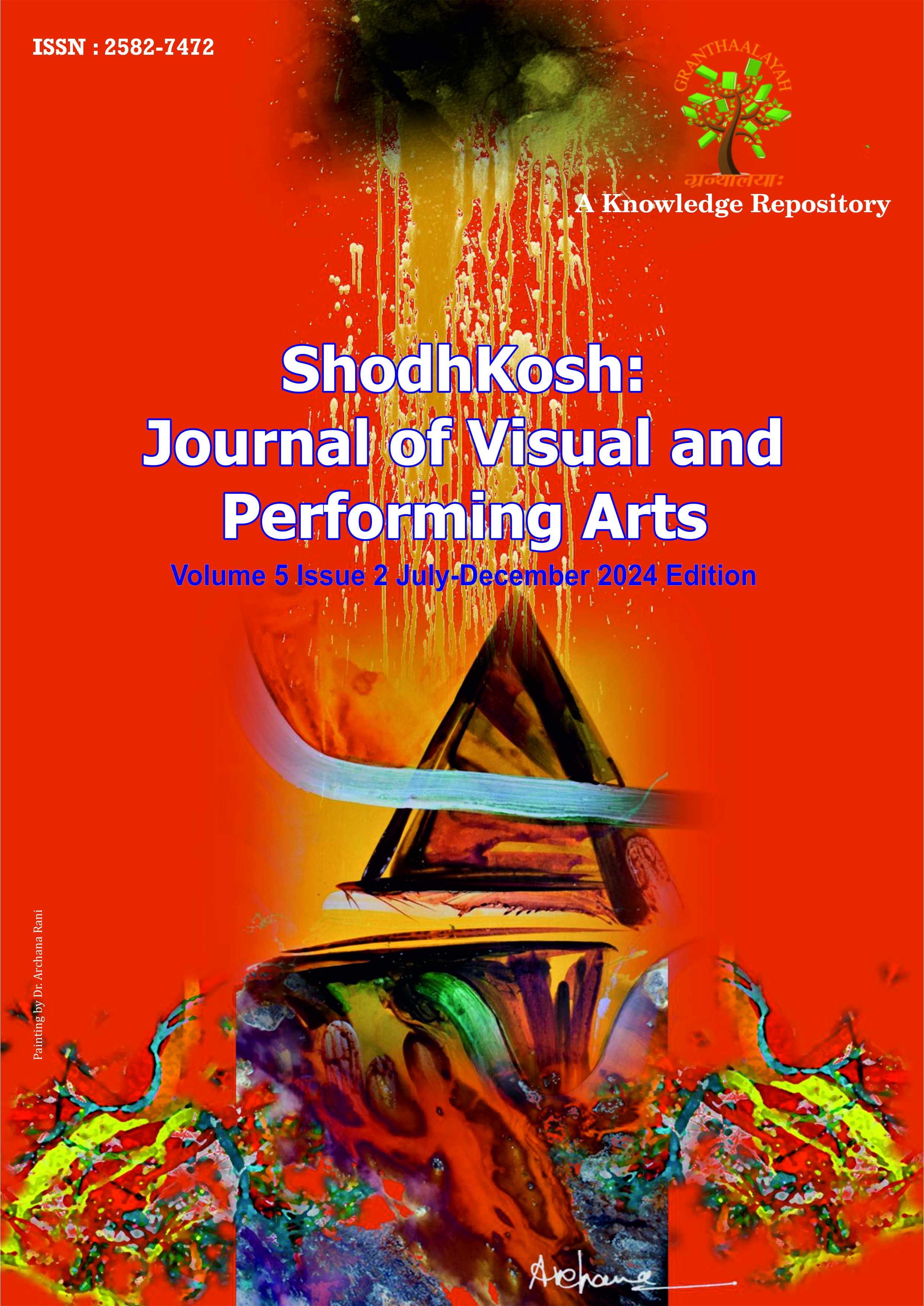A PILOT ANALYSIS ON THE IMPACT OF DIGITALIZATION IN PRINTING TECHNOLOGY ON EMPLOYABLE OPPORTUNITIES IN PUNE
DOI:
https://doi.org/10.29121/shodhkosh.v5.i2.2024.5427Keywords:
Digitalization, Printing Technology, Pilot Study, Cronbach’s Alpha, Internal Consistency, Printing Industry, Digital Transformation, Likert Scale, Pune, Reliability AnalysisAbstract [English]
The printing industry, traditionally rooted in mechanical processes, is experiencing a transformative wave driven by digital technologies. This study presents a pilot analysis aimed at evaluating the perceptions of industry professionals regarding the impact of digitalization on operations, skills, and organizational practices within printing companies in Pune, India. The research is grounded in empirical data gathered from a structured questionnaire comprising 40 Likert-scale items designed to capture sentiments on digital integration, employee readiness, technical infrastructure, and organizational adaptation.
The pilot sample consisted of 49 valid responses from stakeholders across small, medium, and large-scale printing companies. Data were analyzed using Cronbach’s Alpha to test internal consistency and reliability of the instrument. The result, α = 0.966, indicates excellent reliability and validates the robustness of the questionnaire for broader application. Descriptive statistical analysis further revealed strong consensus among respondents on key factors such as the necessity for digital upskilling, increased efficiency due to digital tools, and changing customer expectations. Graphical representations, including histograms and frequency charts, highlight the distribution of responses and support the reliability findings.
This study contributes significantly by offering a validated measurement instrument tailored to the printing sector's digital evolution. The findings also offer insights for policymakers, educational institutions, and industry leaders aiming to support digital transformation through informed decision-making and strategic interventions.
The pilot study sets the stage for a full-scale research project that will examine inter-variable relationships, conduct inferential analysis, and identify sectoral challenges. The implications of this digital shift extend beyond technology adoption—they reshape roles, training systems, and competitiveness in the global print industry.
References
Cronbach, L.J. (1951). Coefficient alpha and the internal structure of tests. Psychometrika.
Nunnally, J.C. (1978). Psychometric Theory. McGraw-Hill.
Tavakol, M., & Dennick, R. (2011). Making sense of Cronbach’s alpha. International Journal of Medical Education.
Schwab, K. (2016). The Fourth Industrial Revolution. World Economic Forum.
Cheng, H., & Zhou, M. (2020). Evolution of Printing Technology. Journal of Graphic Engineering and Design.
Cronbach, L. J. (1951). Coefficient alpha and the internal structure of tests. Psychometrika, 16(3), 297–334. DOI: https://doi.org/10.1007/BF02310555
Nunnally, J. C. (1978). Psychometric theory (2nd ed.). McGraw-Hill.
Tavakol, M., & Dennick, R. (2011). Making sense of Cronbach’s alpha. International Journal of Medical Education, 2, 53–55. DOI: https://doi.org/10.5116/ijme.4dfb.8dfd
DeVellis, R. F. (2016). Scale development: Theory and applications (4th ed.). Sage Publications.
Schwab, K. (2016). The Fourth Industrial Revolution. World Economic Forum.
Cheng, H., & Zhou, M. (2020). Evolution of printing technology and digital integration. Journal of Graphic Engineering and Design, 11(1), 17–26.
Ghosh, A. (2021). Digital skills and Industry 4.0: Challenges and opportunities. Indian Journal of Industrial Relations, 56(3), 487–498.
Kaur, R., & Sharma, P. (2020). Role of skill development in enhancing employability in India. Journal of Management and Entrepreneurship, 14(2), 33–45.
IFRA. (2018). Global trends in digital printing: Challenges and opportunities.
FICCI & NASSCOM. (2019). Future of jobs in India: A 2022 perspective.
Kapoor, N., & Singh, S. (2021). Employability in the digital era: A need for curriculum reform. International Journal of Educational Development, 82, 102377.
Ministry of Skill Development and Entrepreneurship. (2020). Skill India Report. Government of India.
Ghosh, S. (2019). Reskilling and upskilling: A roadmap for the Indian workforce. Asian Journal of Human Resource Management, 7(1), 44–51.
Rao, M. S. (2018). Future of work: Challenges for employability and digital education. Lambert Academic Publishing.
Deloitte. (2019). Digital disruption and the future of work in India.
Jain, P., & Bansal, M. (2020). Digital printing: A comparative study of traditional vs. modern techniques. Journal of Printing Science and Technology, 36(2), 84–93.
Saini, S., & Sinha, R. (2021). Impact of digital technology on employment patterns in MSMEs. International Journal of Management Studies, 8(2), 101–112.
World Economic Forum. (2020). Jobs of tomorrow: Mapping opportunity in the new economy.
Patel, D., & Shah, R. (2022). The impact of automation on employability in manufacturing. Indian Journal of Labour Economics, 65(3), 321–338.
PwC India. (2018). Reimagining employability in the age of automation.
Sahoo, A., & Das, S. (2019). Digital readiness of Indian SMEs: A case of the printing sector. Journal of Small Business and Development, 10(1), 77–89. DOI: https://doi.org/10.37506/v10/i12/2019/ijphrd/191934
McKinsey Global Institute. (2017). Jobs lost, jobs gained: Workforce transitions in a time of automation.
National Skill Development Corporation. (2020). India Skills Report. NSDC.
Agarwal, R., & Taneja, N. (2021). Role of vocational education in boosting employment in the printing industry. Indian Journal of Vocational Studies, 12(1), 56–64.
Singh, V. (2020). Printing technology in India: Challenges in the digital age. Indian Journal of Applied Sciences, 9(5), 45–50.
Downloads
Published
How to Cite
Issue
Section
License
Copyright (c) 2024 Sagar. K. Bandgar, Dr. Meeta M. Meshram

This work is licensed under a Creative Commons Attribution 4.0 International License.
With the licence CC-BY, authors retain the copyright, allowing anyone to download, reuse, re-print, modify, distribute, and/or copy their contribution. The work must be properly attributed to its author.
It is not necessary to ask for further permission from the author or journal board.
This journal provides immediate open access to its content on the principle that making research freely available to the public supports a greater global exchange of knowledge.




























